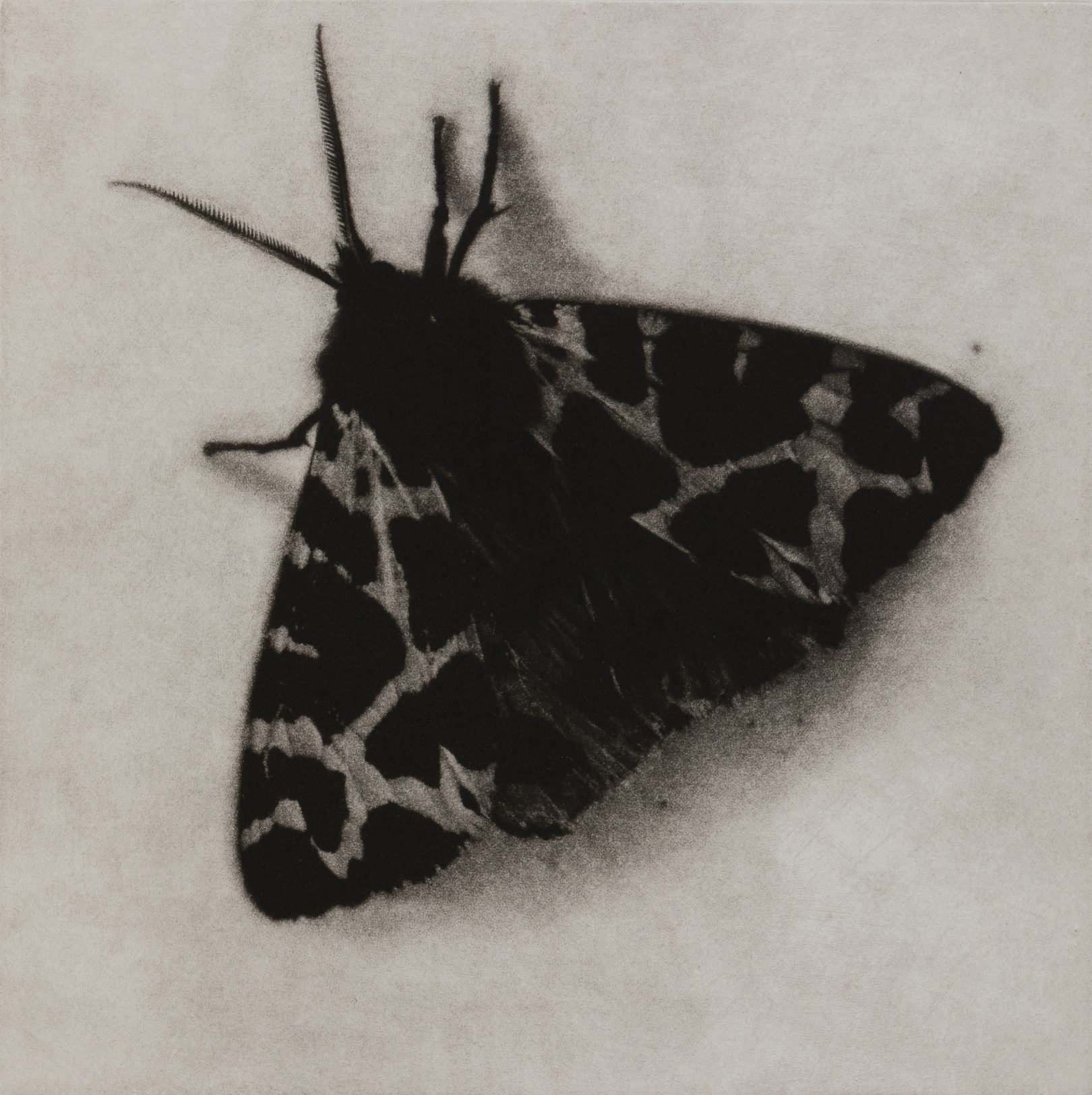Moths are vital to our entire ecosytem.
Why we should worry about moths? They are declining and in danger. Read on…..
Adult moths are important pollinators of flowers, but their larvae, or caterpillars are also an essential part of the food chain for hedgehogs, shrews, frogs, toads and lizards, as well as for spiders and other insects. Also heavily dependent on moth caterpillars as a food source, are bats and other common garden birds such as robins, great tits, wrens and blackbirds. For example, currently a brood of blue tits require around 15,000 caterpillars, equating to 35 billion caterpillars per year. The decline in moths could have a serious knock-on effect on the population health of a wide range of birds and bats and other mammals.
Insects in general are in decline. There is general agreement about that. Some authorities say that the decline is eight times faster than any for any other mammal species.
The reason? Well, it is entirely because of humans. Bugs die in large numbers from the pesticides used over farmland and from the sprays and bug-zappers in homes and gardens. The other major cause, also for our entire planetary change, is global warming. Insects who can no longer tolerate the over-heating of certain regions of the earth are moving north.
Why moths are declining?
In the case of moths, there are other factors which affect their populations. As they are nocturnal, light pollution is a problem, as they fly to their deaths around artificial light sources. Climate change is another major problem, as the southern and northern ranges of different species are changing. With milder conditions some species such as the Cinnabar Moth are now spreading north into Scotland to find the cooler conditions they require.
Moth life-cycles have evolved to be synchronised with their food-plants. However, climate change may alter the timing of the emergence of leaves and flowers of plants and trees, and make it uncertain whether suitable food plants will be available to support the migrants. This then has a knock-on effect if the timing of the emergence of caterpillars does not coincide precisely with the breeding cycle of the birds which depend on them as food, especially for the feeding of their chicks. https://www.wildlifeworld.co.uk/moths/
The UK has around 2,500 different native moth species, however numbers have decreased by a third since 1968 and 62 species have gone extinct. For example, the Reddish Buff and Barberry Carpet are highly threatened, whilst others, such as the Bordered Gothic and Brighton Wainscot may already be extinct, despite intensive searches. The UK Government has identified more highly threatened moths than birds or butterflies.
Life-cycle of the moth
There are four stages to the life of a moth: the egg, the larva or caterpillar, the pupa and the adult winged moth. A female moth fertilises her eggs inside her body after mating. Then she lays forty or fifty eggs over a period of about 2 weeks, choosing plant-rich (or cloth-rich, for clothes moths) places so that the eggs hatch close to good food sources.
After four to ten days, the eggs hatch into larvae, or caterpillars. In order to grow, they shed and eat their nutrient-rich skins. Then they continually feed on plant matter, regularly shedding their skins as they grow. The length of time of this stage varies, depending on the variety of moth, but on average they will eat something like 2,700 times their own body weight. Then, they leave their food plant source to find a safe and sheltered space to develop further in their pupal stage, or cocoon.
The caterpillar
Safe from predators, the caterpillar will weave a kind of silk skin around it, becoming a protective shell in which the larvae can transform into a fully grown moth. This is the cocoon. Now the creature stops feeding, but uses the intense amount of energy stored during the larval grown stage to undergo its metamorphosis. This stage takes from five to twenty-one days, and is incredibly complex, as this account describes:
What is really interesting is that the caterpillar does not actually grow into a moth per se; it goes through a process called histolysis. There is a special group of transformative cells which remain, dormant, inactive, and unseen during the pupal stage of a caterpillar’s life. These cells break the caterpillar down until it is nothing more than a pile of cells, more or less an accumulation of goop. Now it is ready to reform itself into a moth. This reforming process is called histogenesis. https://www.pestwiki.com/moth-life-cycle/
As the moth emerges from the cocoon, it is quite weak and delicate with a bloated abdomen and shrivelled wings. Over the next few hours it pumps a blood-like fluid into its wings to get them to full-size, then once it has dried out, it can begin to fly. The adult moth can live from a few weeks to several months, depending on the species.
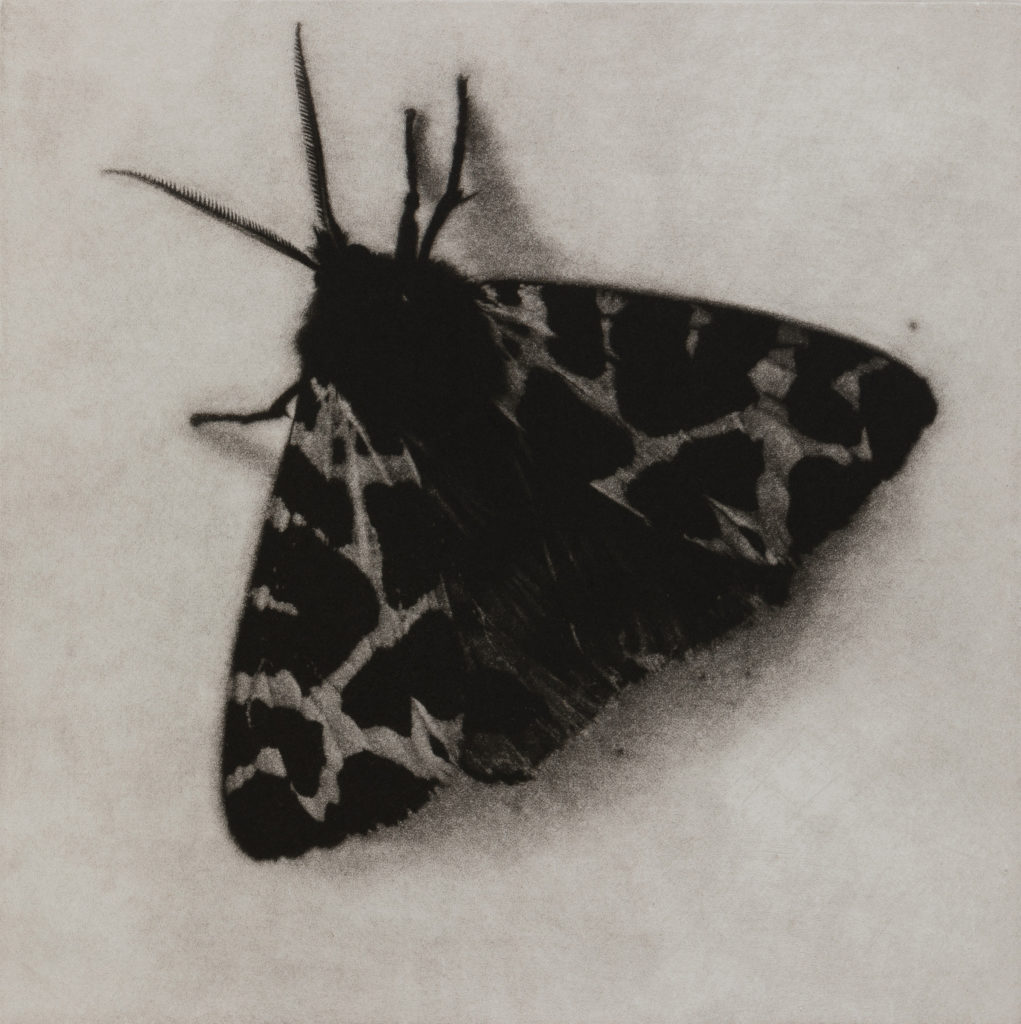
Moths we like: the decline of the Garden Tiger moth and some of its consequences
Described by the RSPB as a ‘stout hairy species’ with chocolatey brown and cream patterned fore-wings and hind-wings, orangey-red with black spots. It prefers cool temperate climates and is native to the northern United States, Canada, and Europe. It survives in a wide variety of habitats from woodlands to grass and, as its name suggests, gardens. The adult Garden Tiger is active from June to September.
The brown furry caterpillars of the Garden Tiger (Arctia caja) are known as ‘Woolly Bears’. They feed on a large variety of host plants, among them Foxgloves, and members of the daisy family. The hairs on the caterpillar are an irritant and the adult moths are bitter and toxic to many species, so this protects them against predators. However, the Cuckoo is one of the few birds who like to eat them, and research has indicated that the dramatic decline in Cuckoo numbers has a connection with the decline of the Garden Tiger moth. For their caterpillars have adapted to survive long frosty winters and they now don’t do well in mild wet winters and the warmer springs of recent years. According to some sources, its population is down by 89% over the last 30 years and it is a protected species under the latest Biodiversity Action Plan of 2015.
Some moths we don’t much like: clothes moths and how to control them
Clothes moths are probably the best known types and the ones which give moths in general a bad name. Tineola bisselliella is the common small white-backed species which is found all over the world. Monopis crocicapitella, is darker coloured with a pale stripe and probably less aggressive. They will chew holes in textile of animal origin, such as wool carpets, woollen jumpers, fur or feathers.
Clothes moths prefer dirty clothes that are stored in a dark and undisturbed places. They are also not good flyers, so they won’t go out of their way to find food. So if you keep your clothes super-clean and washed, they won’t be interested. The use of cedar balls and storing of vulnerable fabrics in tightly sealed polythene bags should help to avoid problems. However, English Heritage recommend that the best remedy is to freeze affected articles for at least 2 weeks in sealed containers. And to take your clothes out of the dark wardrobe monthly and shake them, as these moths hate to be disturbed.
Sarah Gillespie’s moths
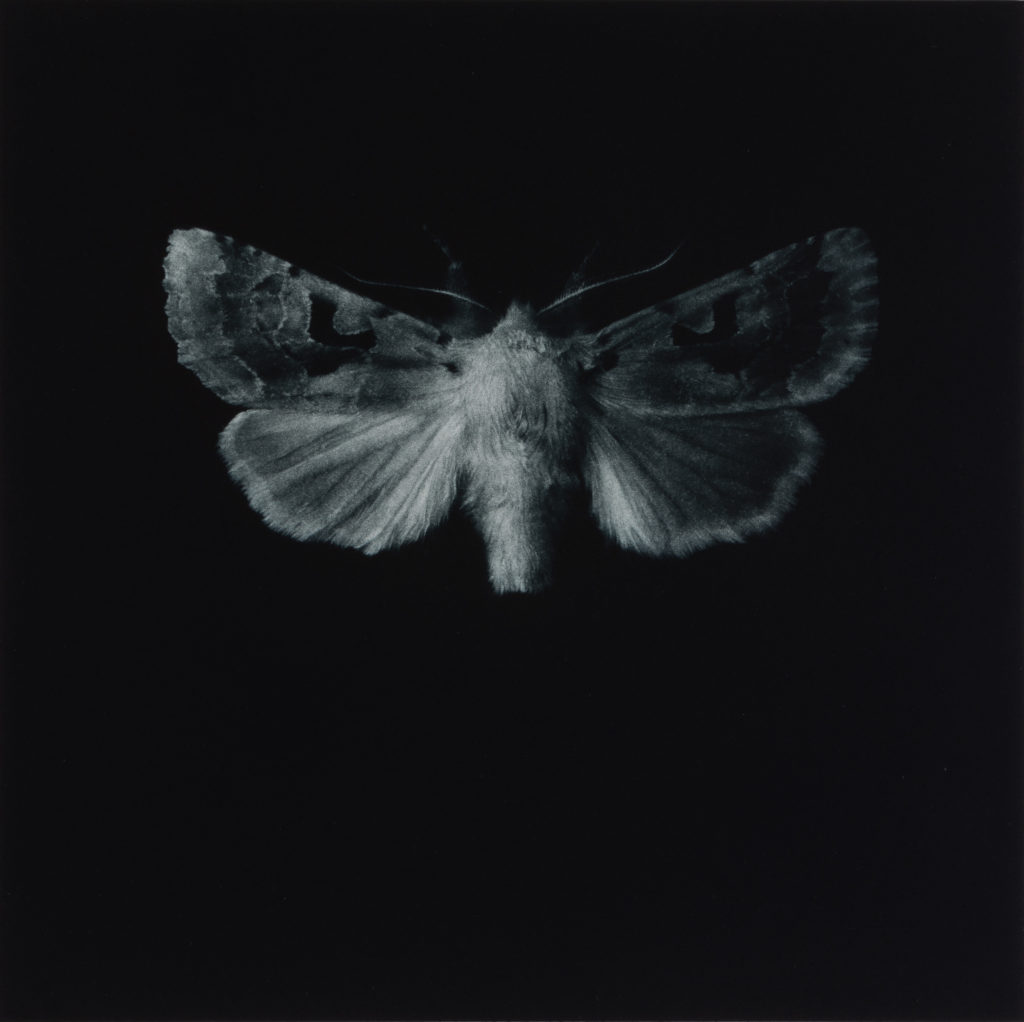
Hebrew Character moth
The typical form of this common species has a distinct black mark on the forewing that is unique among spring-flying moths, but in northern parts, this mark may be the same as the ground colour, or paler.
Wingspan 30-35 mm
This moth spends the winter as a pupa in an underground cocoon, with the adult fully formed inside. The caterpillars can be found between April and July, feeding mainly at night on the buds and then the leaves of trees, shrubs and herbaceous plants including Birch, Aspen and Oak.
Adults fly late in the night, even in cold conditions and can be seen feeding at sallow blossom, also regularly attracted to light and sugar. They are common and widespread in England, Wales and Scotland.
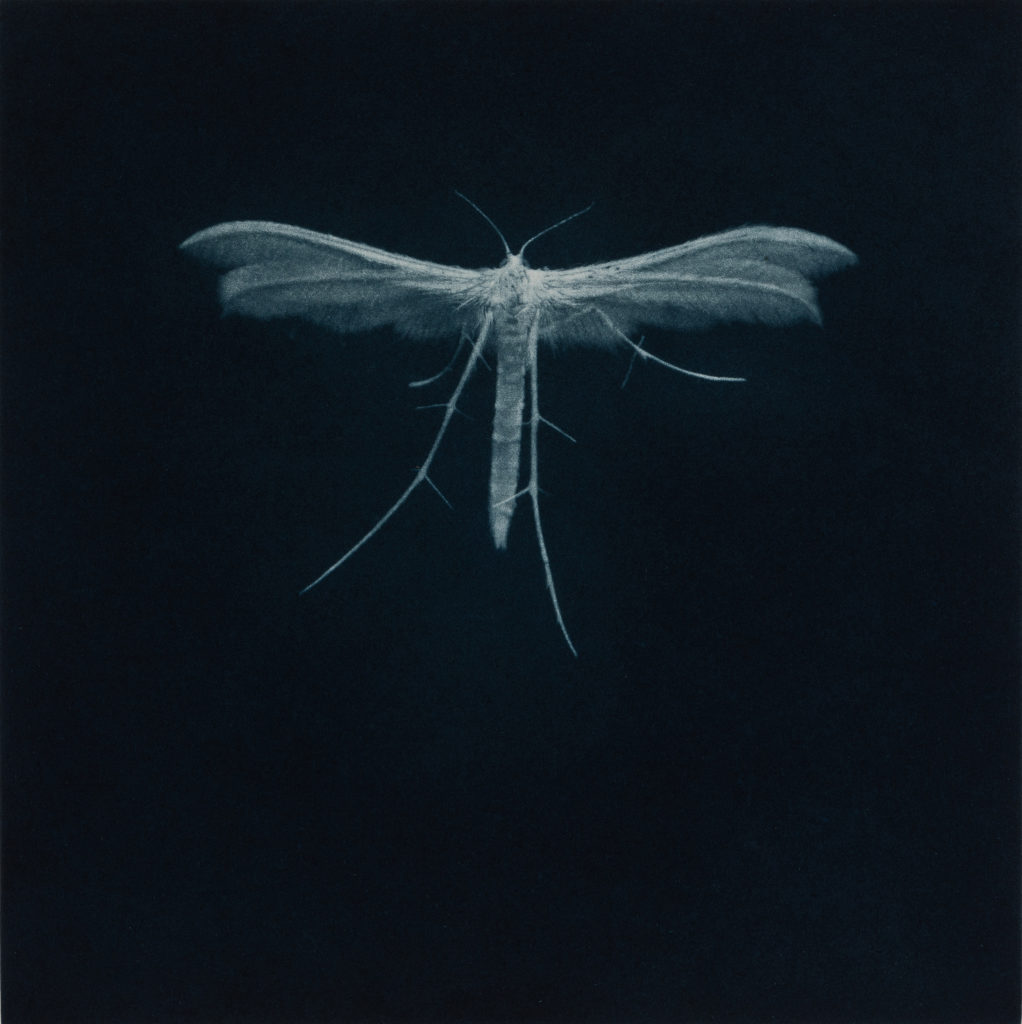
White Plume moth
Family Pterophoroidea
Wingspan 26-34 mm
Unmistakeable wings are deeply divided, or ‘plumed’
Habitat in dry grassland, fens, waste-ground and gardens
Overwintering caterpillars feed on convolvulus – bindweed
Common species throughout UK,
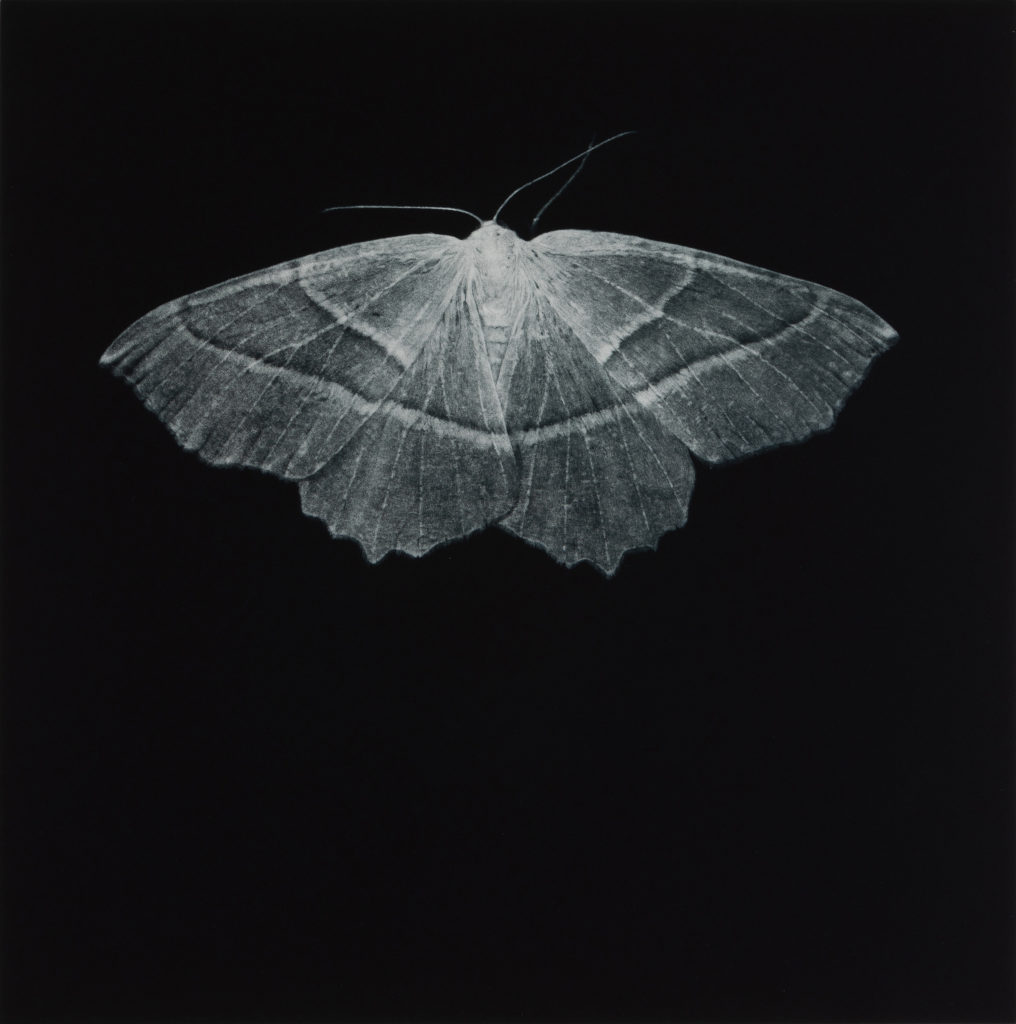
Light Emerald moth
Family: thorns, beauties, umbers and allies (Geometridae)
Wingspan 30-40 mm
Habitat in broadleaved woodland and the caterpillar feeds on a range of broadleaved trees and shrubs including Oak Hawthorn, Blackthorn, Hazel, Silver Birch, elm, Horse Chestnut Sweet Chestnut and Beech
Found in England, Wales, Scotland and Ireland
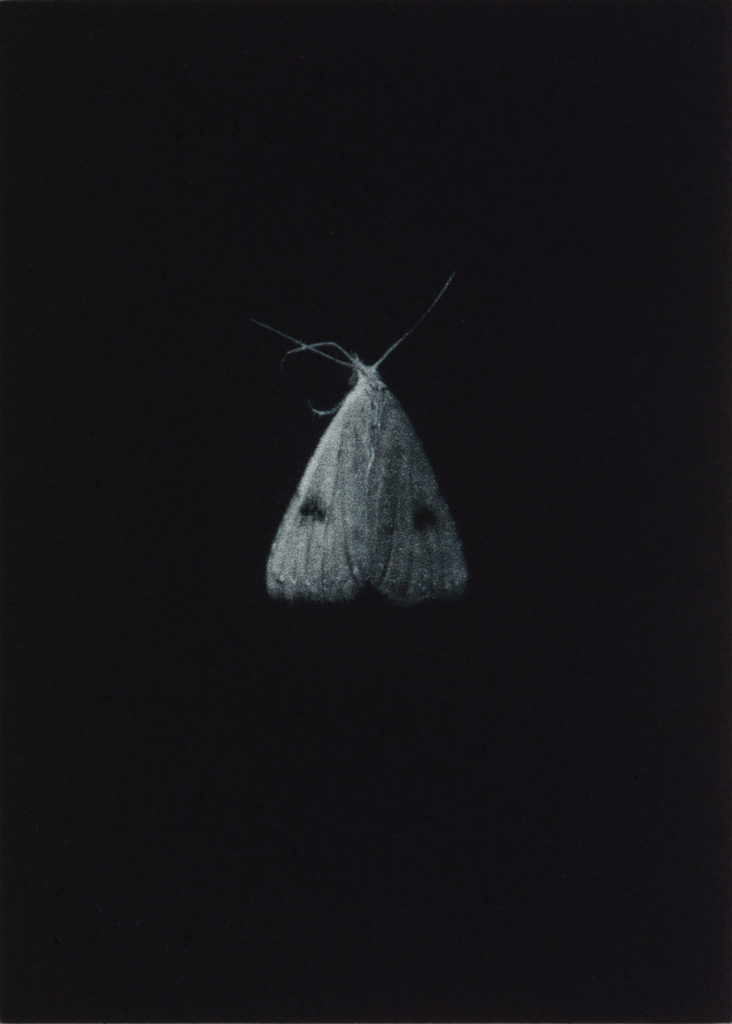

Straw dot moth
Family: Noctuidae
Wingspan 18-22 mm
A common species, more so in south of England than in the north.
Habitat in damp grassland, fens, waste-ground and gardens
Two generations a year, fly in June-July and August-September
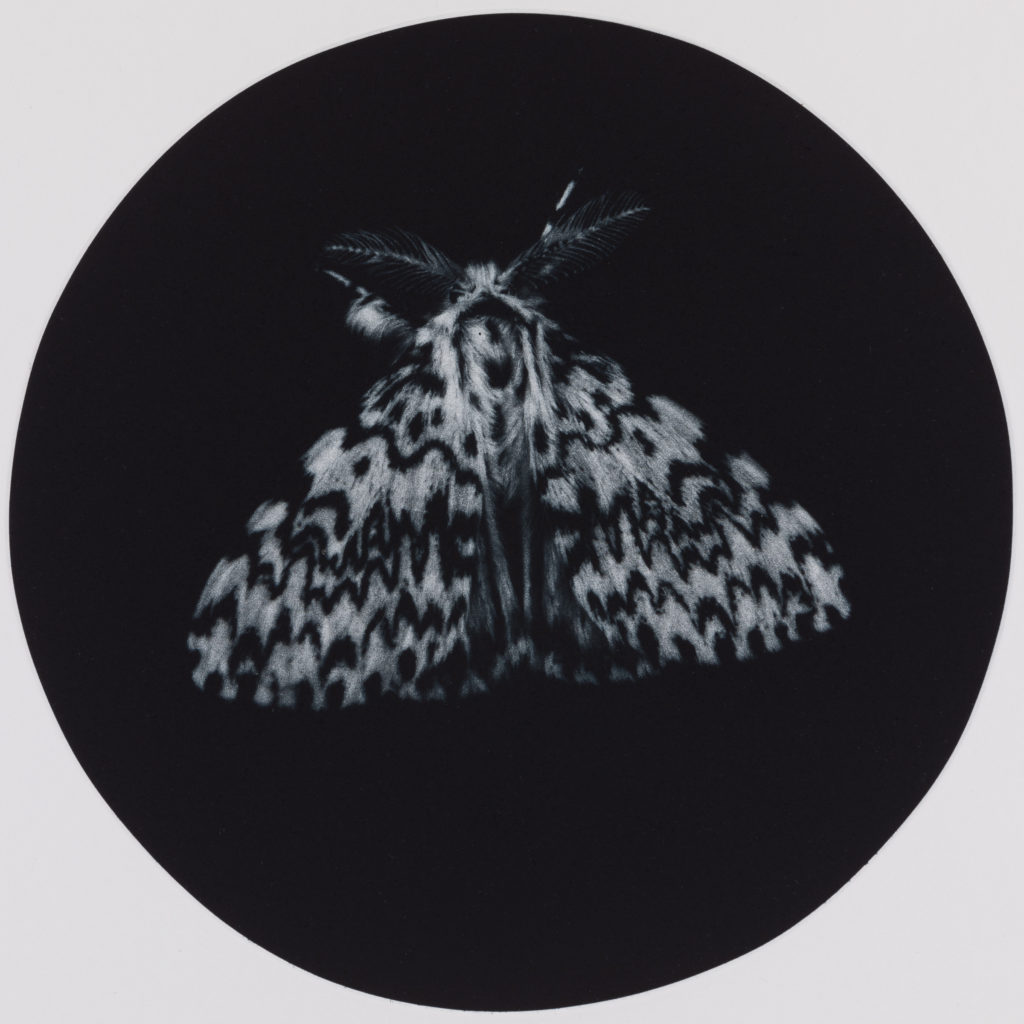

Black Arches moth
Family – Tussock moths (Lymantriidae)
Wingspan 36-56mm
The adults fly at night and especially the males are attracted to light. They will sometimes rest on tree trunks or posts during the day. The caterpillars can be found from April to June after they have overwintered as eggs.
Habitat Woodland and parks with mature oaks, but also other trees including Midland Hawthorn, birches and elms.
Caterpillar food plants: mainly Pedunculate Oak and Sessile Oak, but also other trees including Midland Hawthorn birches and elms.
Well distributed in the southern section of England, East Anglia and the south Midlands. Local in Lincolnshire, west Wales and the Isle of Man.



Light Emerald moth
Family: thorns, beauties, umbers and allies (Geometridae)
Wingspan Range – 36-52mm
Habitat in broadleaved woodland and most other places with trees and shrubs such as parks and gardens & caterpillar feeds on a range of broadleaved trees and shrubs including Pedunculate Oak Hawthorn, Blackthorn, Hazel, Silver Birch, Downy Birch, elms, sallows, Horse Chestnut, Sweet Chestnut and Beech.
Well distributed and generally frequent across most of England, Wales, Ireland and lowland Scotland. Also frequent on the Isle of Man and the Channel Islands.
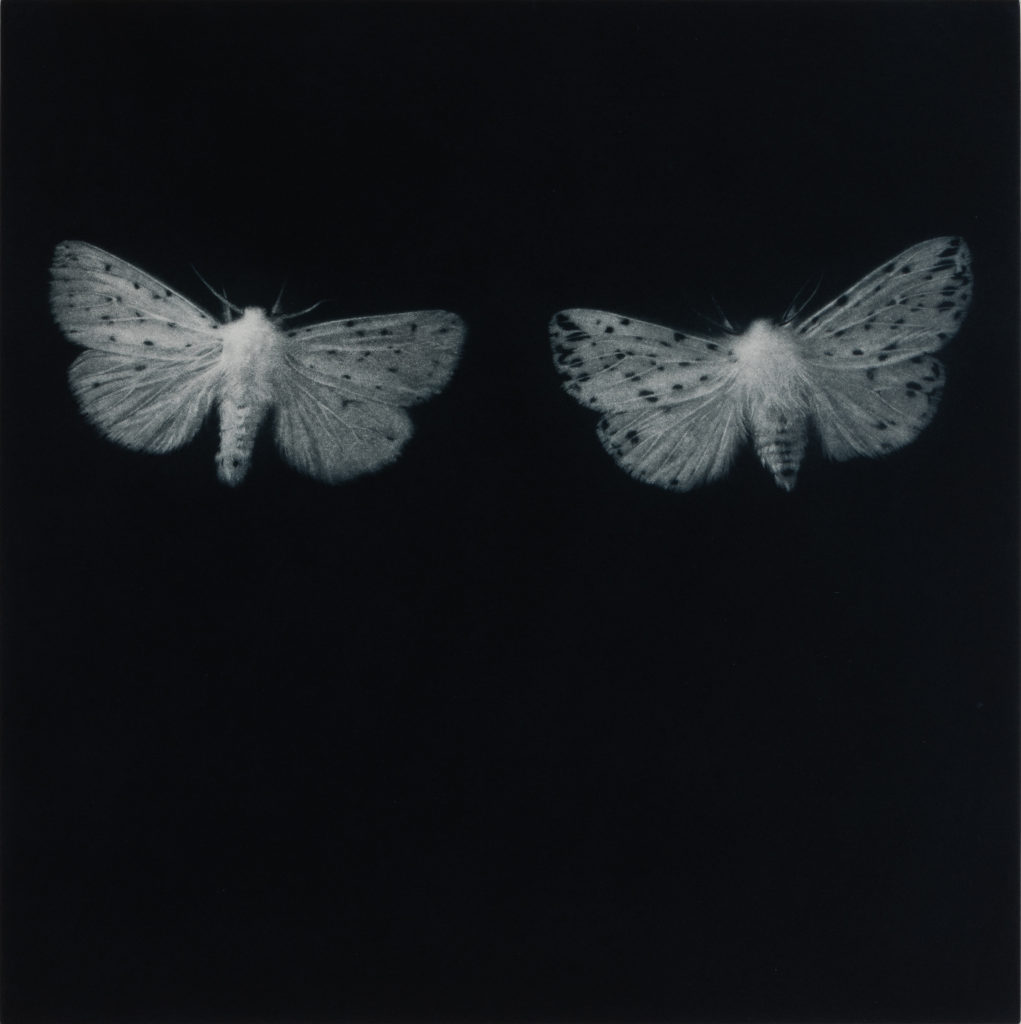

Ermine moth
Arctiidae; Same family as Tiger moths;
Wingspan 36-46 mm
Wing colour varies from white to creamy buff to brown, with varying numbers of small black spots
Caterpillar feeds on a wide range of herbaceous plants including Common Nettle and Dock.
Found in most rural and urban habitats including gardens, hedgerows, grassland, heathland, moorland, woodland and on the coast.
Common and well distributed throughout Britain, the Isle of Man and Ireland. Also abundant in the Channel Islands. but also a priority species for research
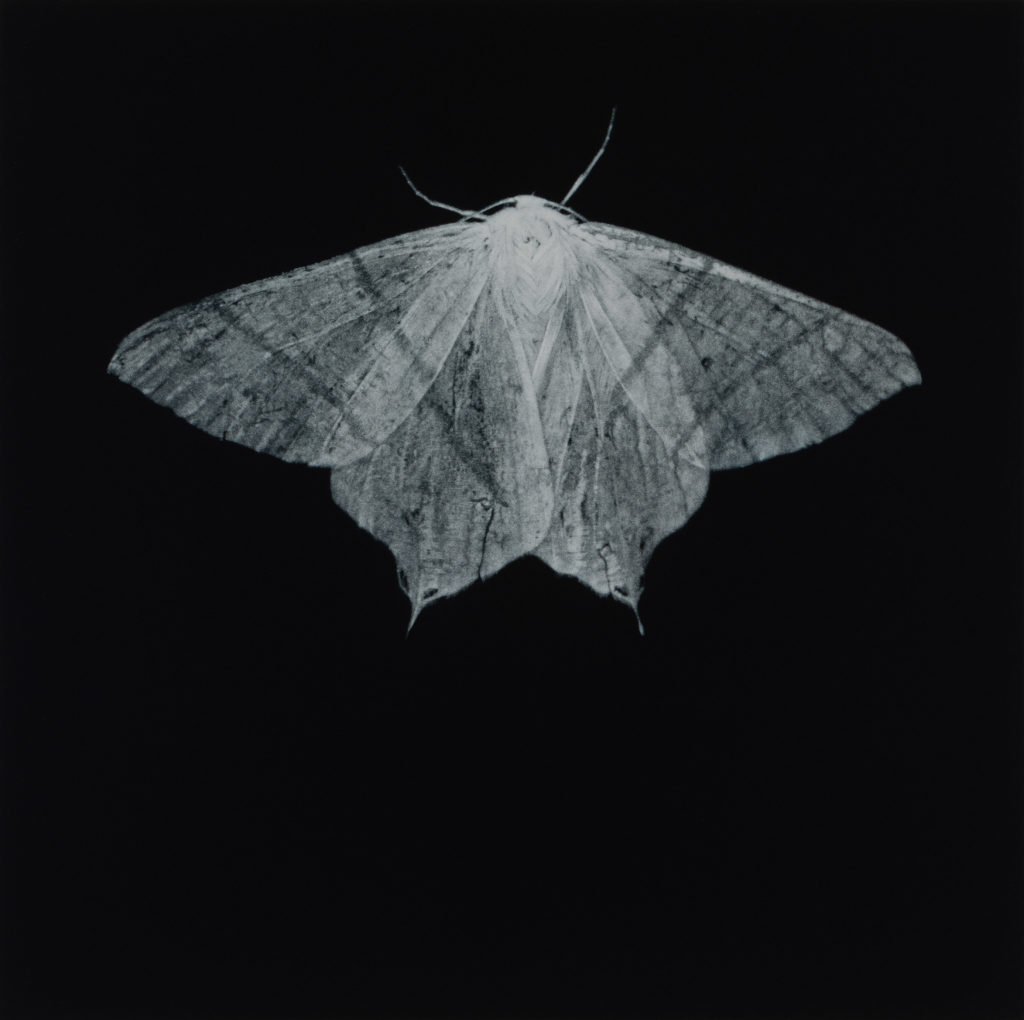

Swallowtail moth
Family: – Thorns, beauties, umbers and allies (Geometridae)
Wingspan 44-60mm
The adults are strictly nocturnal flying rapidly at night. However, they can be occasionally disturbed during the day. They are attracted to light. They overwinter as caterpillars in a bark crevice.
Caterpillar feed plants are woody broadleaves, including Blackthorn, Hawthorn, and Goat Willow, as well as Elder, Horse-Chestnut and Ivy
Habitat in woodland, hedgerows, parks and gardens and well distributed and fairly frequent across most of England, Wales, Ireland and the lowlands of Scotland. Also widespread in the Channel Islands and the Isle of Man.


Ribbandwave moth
Family Mochas and Waves (Geometridae);
Wingspan 28-32mm
Caterpillar feeds on a range of low-growing herbaceous plants including bedstraws, Wood Aven, Primrose, dandelions and docks.
Common and well distributed throughout England, Wales, the Isle of Man, lowland mainland Scotland, Ireland and the Channel Islands.
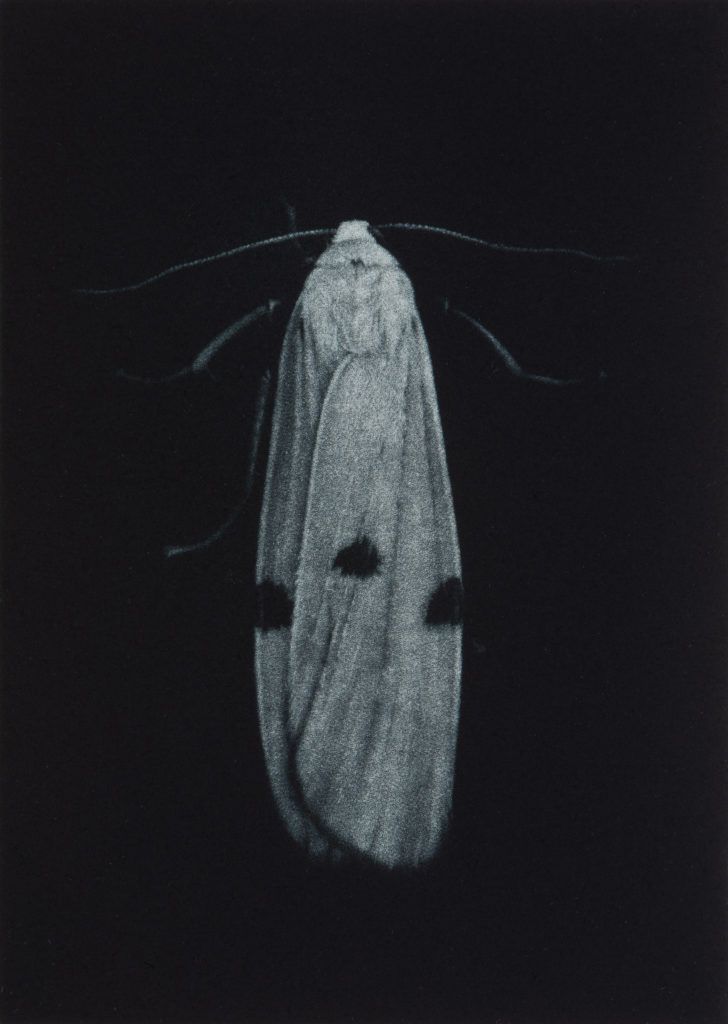

Four Spot Footman moth
Family – Ophiderines
Wingspan 25-29mm
Caterpillar feeds on: Field Bindweed (Convoluvulus arvensis)
Habitat: Often south-facing slopes, well-drained and open, typically with thin soils, such as field margins, embankments or calcareous grassland.
- Countries – England
Found very locally in southern and south-eastern England, with colonies in Dorset, Kent, Essex, Bedfordshire, Cambridgeshire, Northamptonshire, Leicestershire and Lincolnshire, and possibly Oxfordshire, Hertfordshire and Somerset. Formerly elsewhere in the southern half of England, with occasional probable immigrants recorded elsewhere.
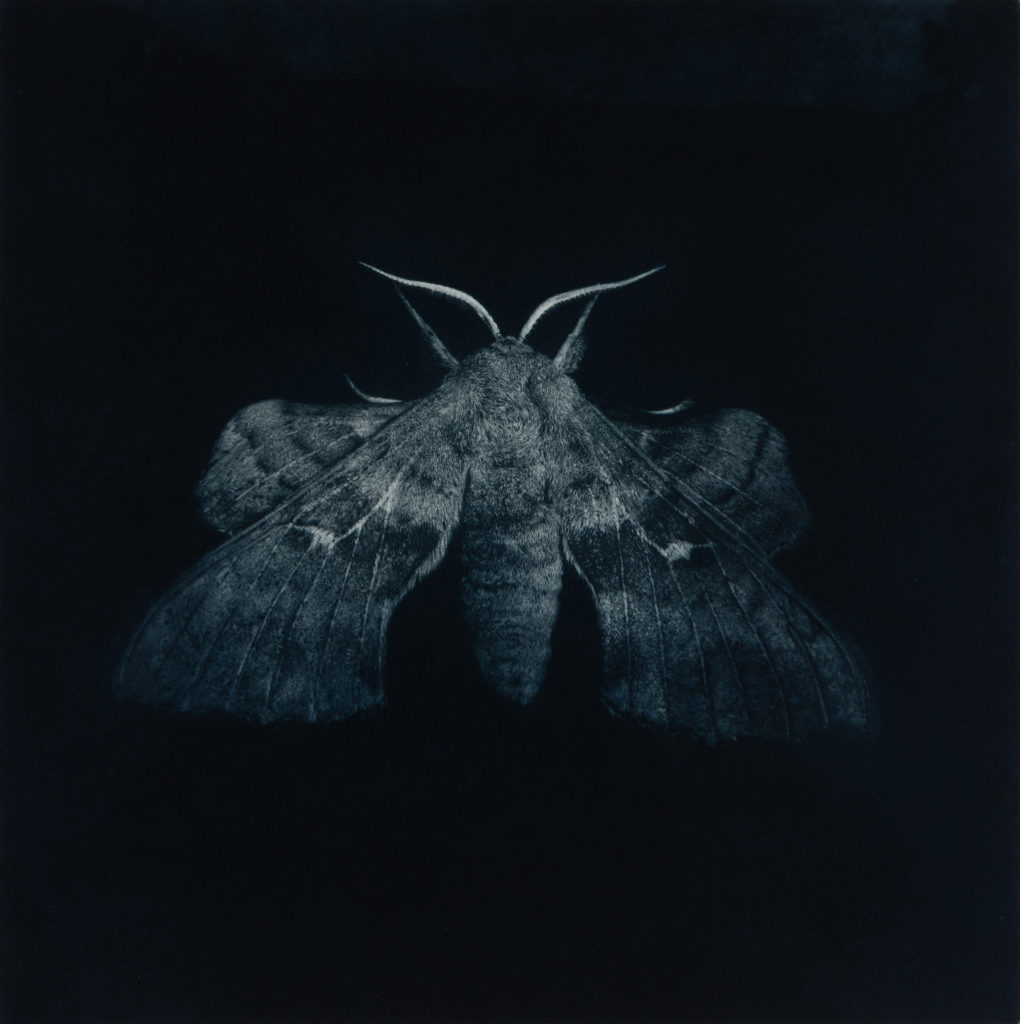

Poplar Hawk moth
Family: Hawk-moths (Sphingidae)
Wingspan 65 – 90 mm
Female comes to light before midnight, the male after midnight, in greater numbers. Rests with abdomen curved up and hindwings further forward than the forewings. Larvae can be found between June to early October.
Flies from May to July in one generation but a partial second can occur in the south between August and September.
Caterpillars feed on Poplars, Aspen, White Poplar, Black-poplar, Lombardy-poplar, sallows and willows, especially Goat and Grey Willows.
Habitat in Low heathland and moorland, fens, woodland, parks and gardens.
Widely distributed, England, Northern Ireland, Scotland, Wales & common wherever foodplant occurs.
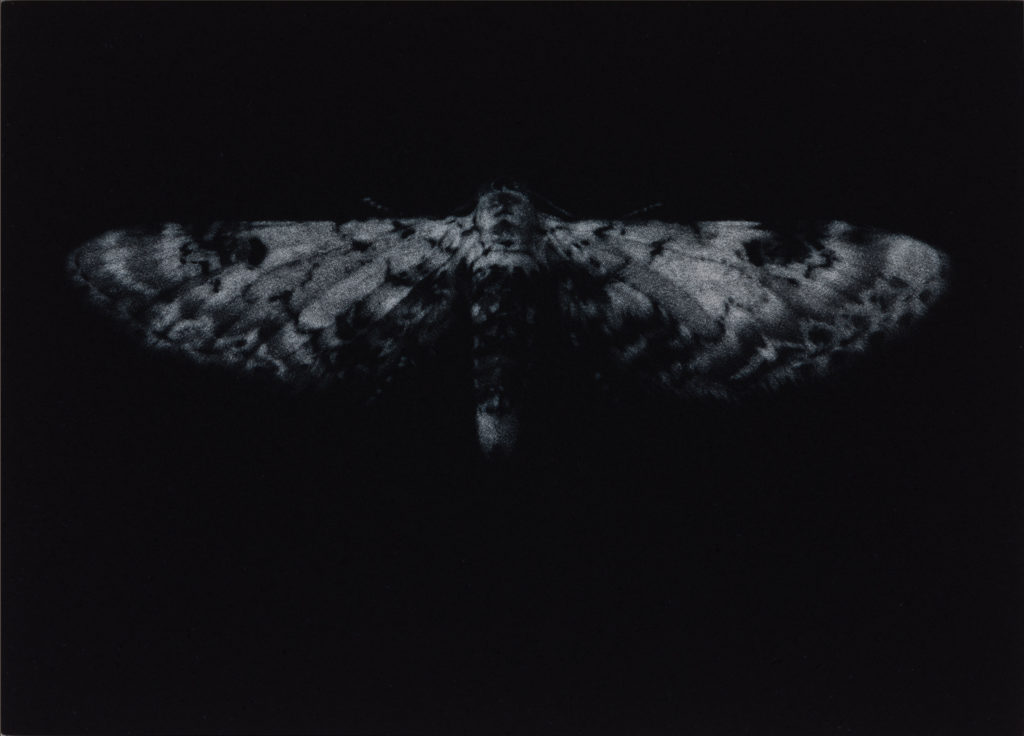

Lime Speck Pug moth
Family: Geometridiae
Wiingspan 16 x 20 mm
Because this species can resemble a bird-dropping, it may thus reduce its attraction to predators. Or so it is thought.
It is fairly common throughout Britain, occurring in a wide range of habitats. The species has one or two broods, and is found on the wing from April to September.
The caterpillars feed on the flowers of a range of low-growing plants.
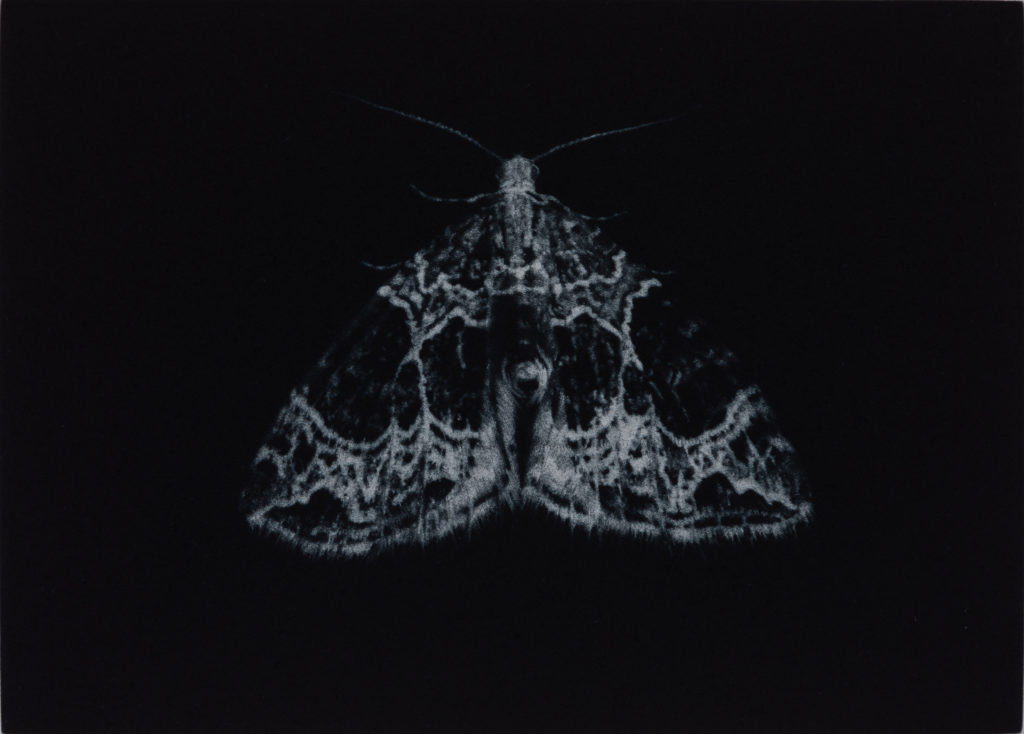

Small Phoenix moth
Family: Geometridiae
Wingspan 23-27 mm
A double-brooded species, flying in spring from May to July, and then again in August and September, except in the north where there is just one generation.
Quite common in England and Wales, but less so in Scotland and Ireland, it inhabits a range of woodland and open habitats.
The main larval foodplants are willowherbs (Epilobium spp.).
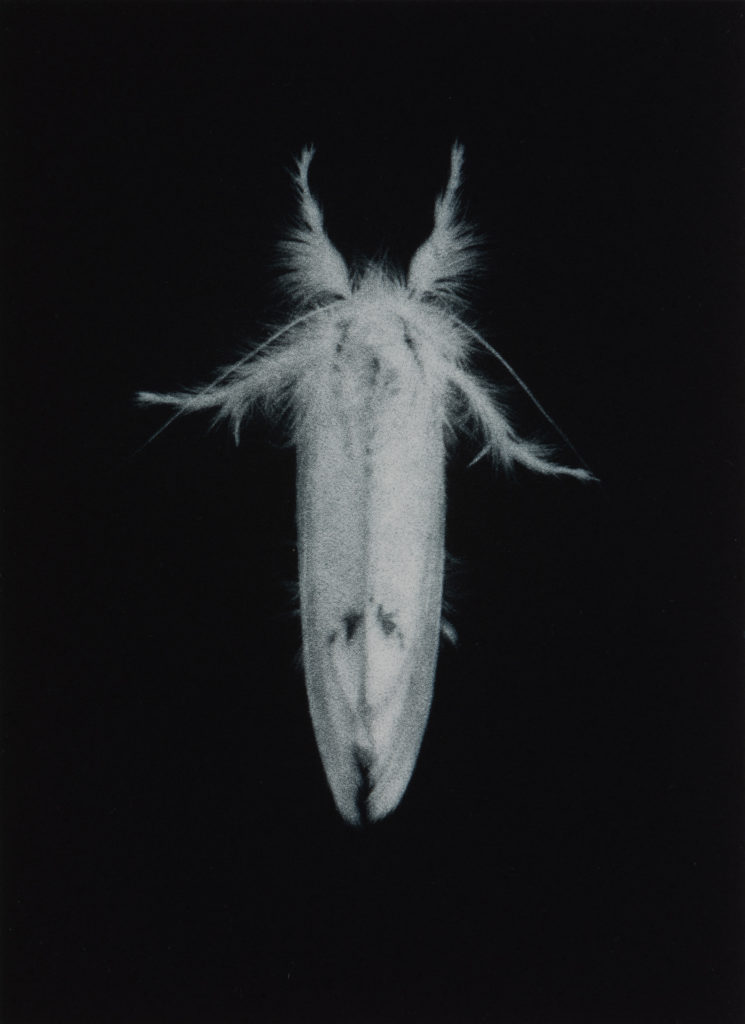

Yellowtail moth
Family: Eribidae
Wingspan 28 – 35 mm
Fairly common in England and Wales, it is local in Scotland and Ireland.
The female is larger than the male. She has a large tuft of yellow hairs at the tip of her abdomen, which she uses to cover her newly-laid eggs.
It flies in July and August, occupying a number of habitats.
The caterpillars, in common with many of the Lymantriidae, are covered with irritating hairs and should only be handled with extreme care. They feed on a number of deciduous trees and shrubs.
Alison Turnbull’s moths
All the moths mentioned here are on show in our exhibition, Bugs, Beauty and Danger.
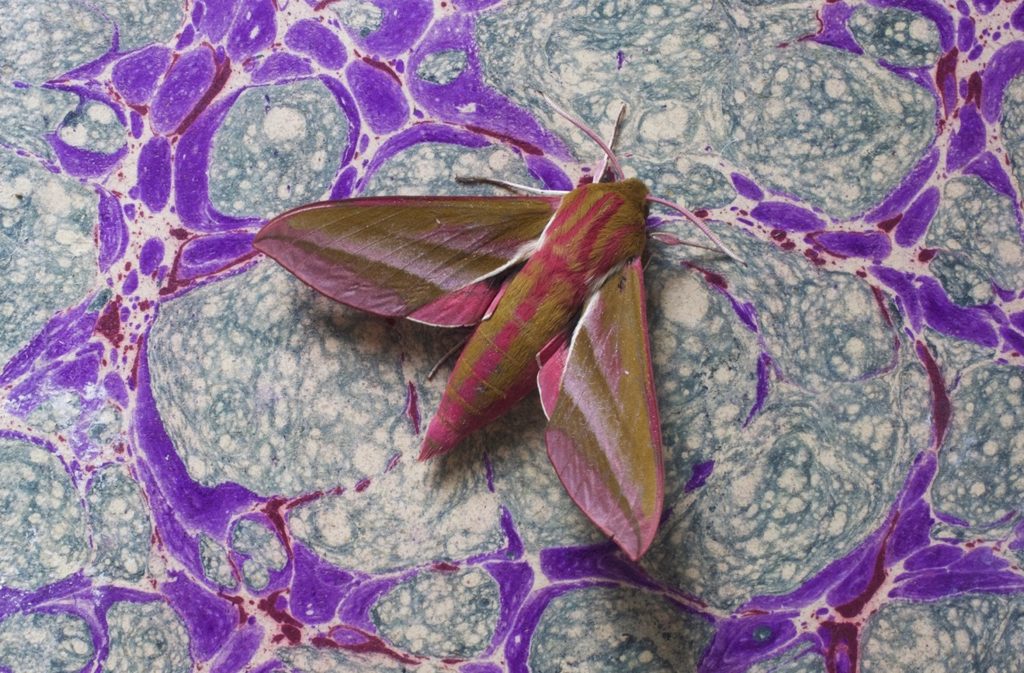

Elephant Hawkmoth
Family: Hawk-moths (Sphingidae)
Flies from May to July in one generation.
Wingspan – 45-60mm
The adults are nocturnal, flying from dusk and coming to light, resting by day amongst its foodplants. They feed from honeysuckle (Lonicera) and other tubular flowers on the wing.
The larvae are very large, with noticeable eye markings. They are usually spotted when looking for somewhere to pupate, or when resting on stems in good weather. They overwinter as pupae in fragile cocoons at the base of plants in loose plant debris/litter, or just below the surface of the ground.
Caterpillar food plants are Rosebay Willowherb, other willowherbs, bedstraws, Enchanter’s Nightshade, fuchsias and Himalyan Balsalm.
Common and very widely and well distributed throughout England and Wales, expanding its range north, widely and well distributed in Ireland, thinly distributed in Scotland, very local and rare in the Channel Islands.
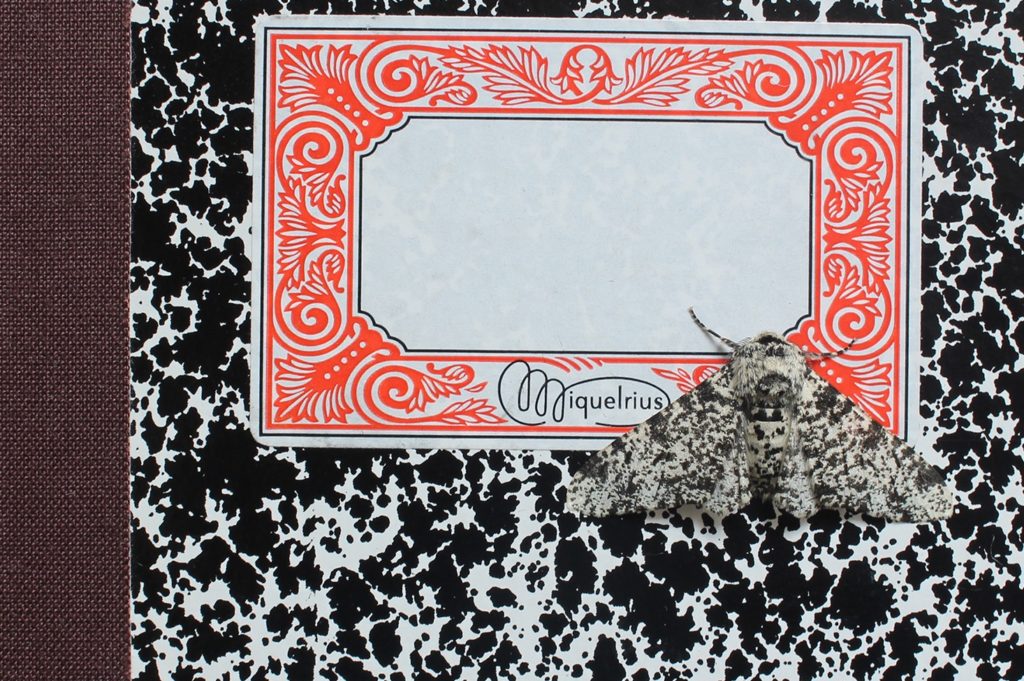

Peppered Moth
Family – Thorns, beauties, umbers and allies (Geometridae)
Wingspan 44-56 mm
The usual form in rural areas is all white, peppered with black dots on both the wings and body. In this form it appears in British gardens. However, black forms known as f. carbonaria were once dominant in industrial areas with high levels of pollution, although their frequency has been steadily declining in recent years. Intermediate forms known collectively as f. insularia are variable between the light and dark forms.
This moth’s amazing story of transformation according to its habitat, has made it famous all over the world. It is often referred to as Darwin’s moth as it is one of the best-known examples of evolution by natural selection.
The larvae appear between early July and late September before they overwinter as pupae just below the ground.
The caterpillar feeds on a wide range of trees, shrubs and smaller plants including Blackthorn, Hawthorn, Downyand Silver Birch, limes, sallows, poplars, oaks, Sweet Chestnut, Beech, Bramble, Broom, Black Currant and Hop
Habitat in Woodland, scrub, hedgerows, parks and gardens.
Very well distributed and fairly frequent throughout most of England, Wales, and lowland Scotland. Also Frequent on the Isle of Man, Ireland and the Channel Islands.
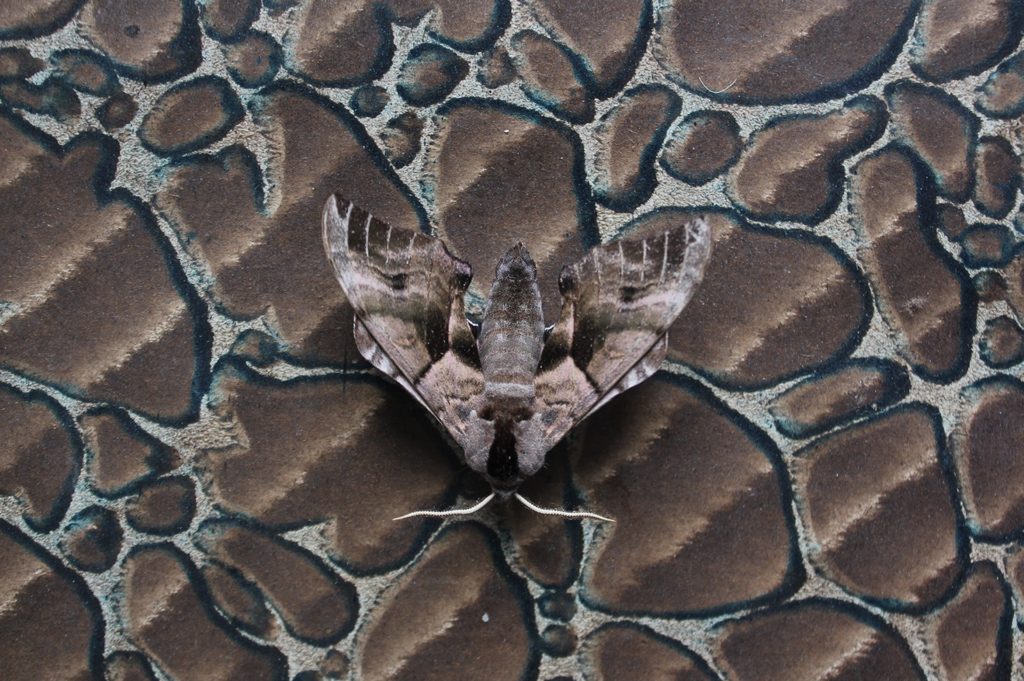

Eyed Hawkmoth
Family: Hawk-moths (Sphingidae)
Wingspan 70-80 mm
Caterpillar Food Plants include Sallows, Apple, wild and ornamental Crab Apple, less common on poplars and Aspen.
Habitat in gardens, orchards, woodland, suburban localities and places where willows grow e.g. parks, riversides, fens and scrub.
Common and well distributed throughout England and Wales as far north as Cumbria, local on Isle of Man, widely distributed but occasional in Channel Isles.
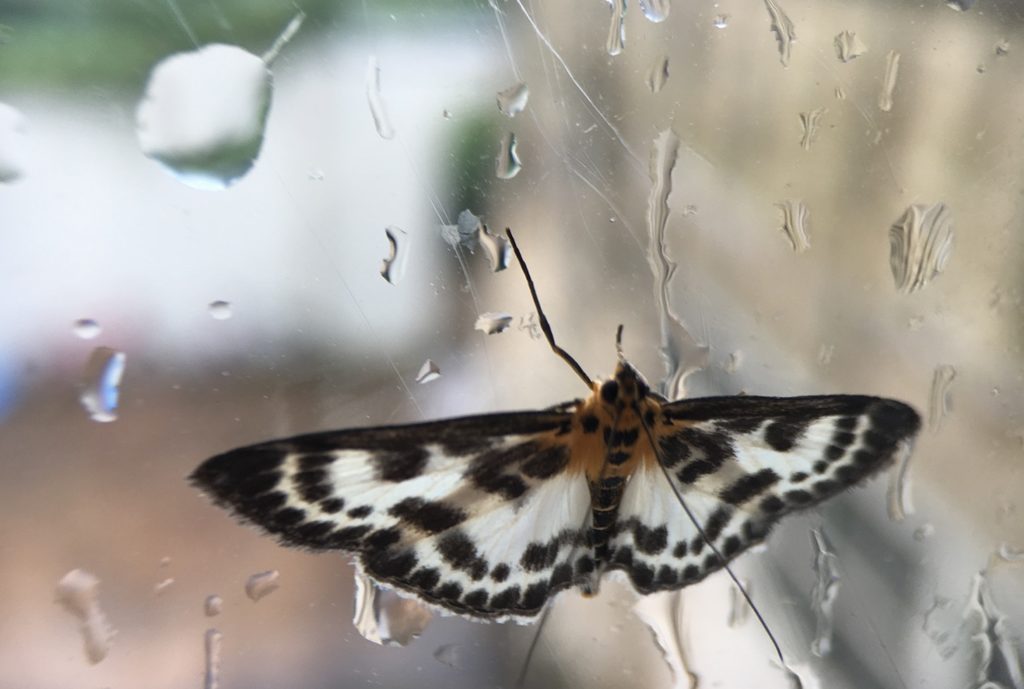

Small Magpie moth
Family – Crambidae
Wingspan– 24-28mm
One of the most familiar of the Pyralidae moth, the Small Magpie is common, easily disturbed by day and often attracted to light.
The caterpillar feeds from a rolled or spun leaf in August and September before spending the winter in a tough silk cocoon in a hollow stem or under the bark. Without further feeding, pupation occurs in the following May in the same cocoon.
On the whole, the moth flies from May to September in a single generation. However, it has been recorded as early as February and sometimes as late as November.
Caterpillars feed on common nettle but also on woundworts, mints, horehounds and bindweeds.
It likes a variety of habitats, including gardens, waste ground, and hedgerows.
Common throughout the British Isles but more local in central and southern Scotland.
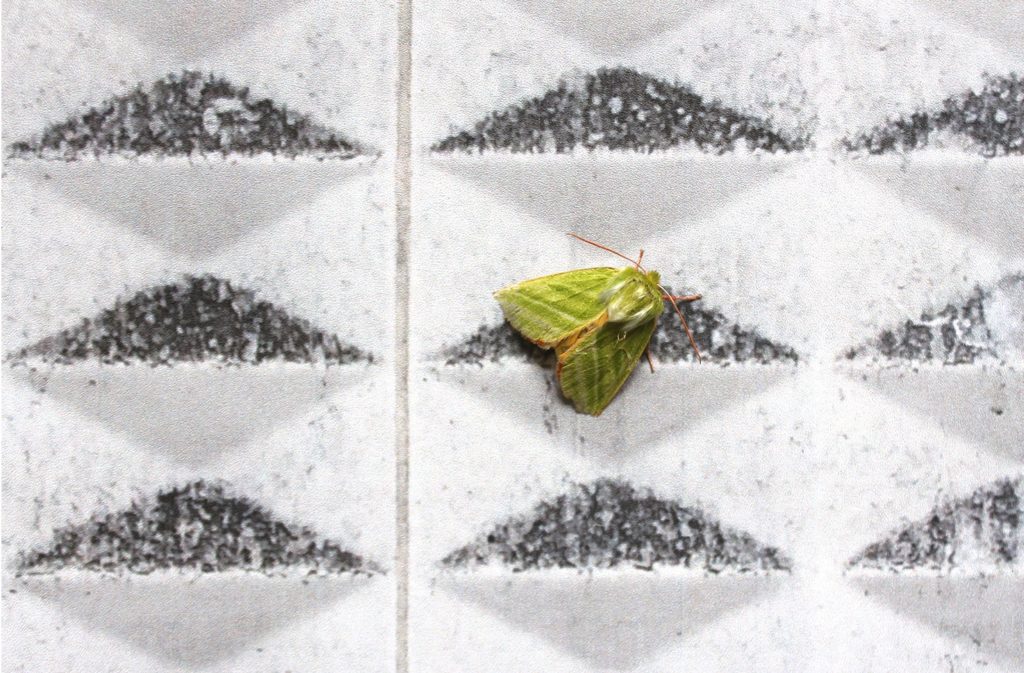

Green silver lines moth
Family – Noctuidae
Wingspan 32-38 mm
Three roughly parallel, diagonal white lines crossing the forewings. The head and thorax are green, the antennae are orange and front legs are pink. The male also has bright pink or pinkish-brown fringes to the wings.
The adults are attracted to light. The caterpillars appear from July to September and then they overwinter as pupae on the underside of the foodplant leaves or in a bark crevice.
Mainly found in or close to woodland habitats.
Caterpillars feeds on broadleaved trees; usually oaks, Silver Birch, Downy Birch or Beech, but also sometimes Hazel, Sweet Chestnut, Aspen and elms.
Fairly well distributed and frequent across much of England and Wales. More local further north in Northumberland, Cumbria and Scotland. Also local on the Isle of Man and in Ireland. Widespread but less frequent in the Channel Islands.

